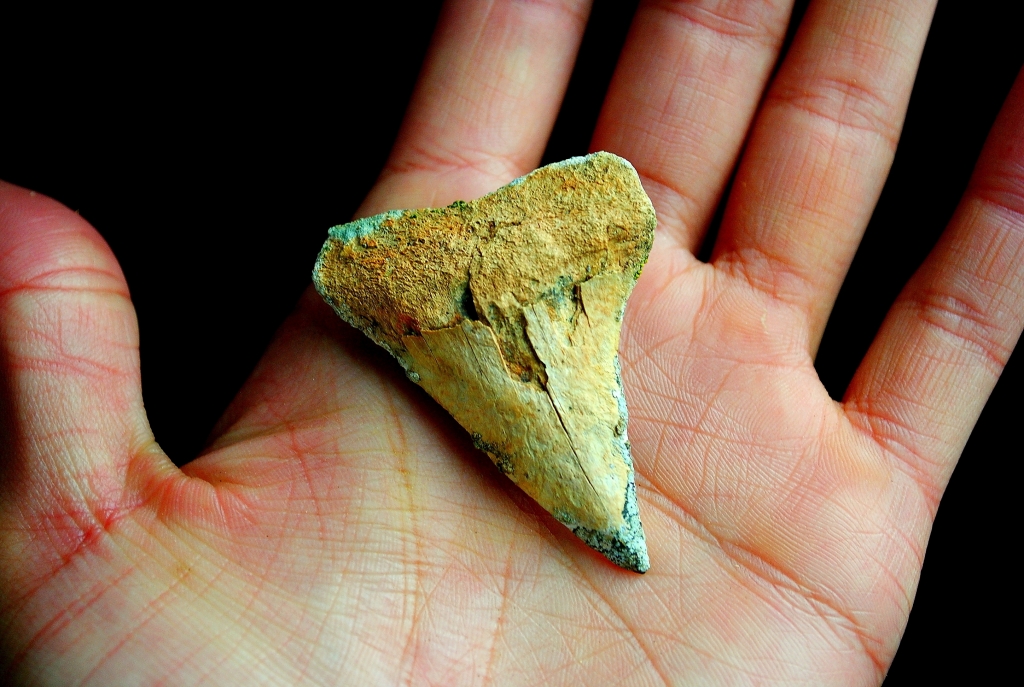How to find shark tooth treasures and where to search
Sharks are known as iconic marine predators — and their sharp chompers come with the territory.
Certain shark species can have hundreds to thousands of teeth at a time that are consistently yanked out or broken by feasting on prey, according to National Geographic.
Marine biologist Jillian Morris explained in a National Geographic report that shark lose their teeth in a conveyor belt-like system; the teeth constantly fall out and grow back.
“More teeth are always developing in their jaw and moving forward to replace the lost ones,” she said.
“It’s a brilliant design.”
Since sharks can lose up to 50,000 teeth in a lifetime — and have been doing so for more than 400 million years — there are plenty of discarded teeth to be found.
Modern-day teeth can be found on America’s shores, while fossilized shark teeth are more likely to turn up in specific locations, especially places that were once underwater.
Some shark teeth that may have fallen to the bottom of the ocean and hardened into sedimentary rock over time have resurfaced as the coastlines changed over millions of years.
Erosion from ocean waves will often chip away at surfaced rocks — revealing fossilized teeth.
Rushing water in riverbanks can also unearth fossils, as well as exposed cliffs where erosion has taken place.
East coast beaches in states such as Florida, Georgia, North Carolina and South Carolina are the best for uncovering fossilized shark teeth, since these areas were once submerged.
Venice, Florida, is often considered the “shark tooth capital of the world.”
Paleobiology professor Kenshu Shimada shared with National Geographic that because more teeth can be found in smaller amounts of rock in these areas due to slow sediment development, shark tooth hunters are likely to get lucky.
West coast beaches aren’t as fortunate in terms of yielding fossilized teeth, but modern-day shark teeth can still be found.
Tips for your hunt
National Geographic recommends researching local areas from coast to coast that were once covered by the ocean, in order to up the odds of finding hidden treasures.
Before setting out on your hunt, bring along a bag or bucket for tooth collections.
Leaving early for the beach is recommended, as well as searching during low tide or after a storm, when the ocean might’ve shaken things up.
Tooth searching takes a lot of patience.
National Geographic suggested searching slowly, especially if you’re bringing small kids along for the journey.

More teeth can be uncovered underneath the wet sand where the waves crash onto the shore, so bring along a small shovel to dig deeper.
Sandy areas with shells and other debris can hide small teeth that look like dark and shiny triangles; they can be the size of a fingertip.
The color of the shark tooth can tell you a lot about its origin.
Most fossilized teeth are black or brown, while some have red or green shades from the minerals in the sediment, National Geographic also shared.
Light-colored or white teeth usually means the teeth came from a modern-day shark.
Shark teeth match the shark’s prey, so it can be simple to identify the origin.
For example, serrated and curved teeth belonging to a tiger shark can rip open the shells of sea turtles — while super strong and sharp teeth belonging to the great white are meant for crushing seal bones.
Read the full article Here


